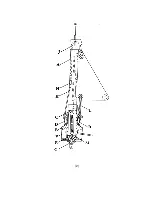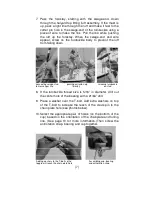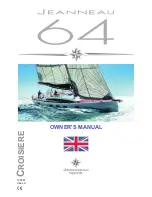
5. Add or eliminate furling line on drum as necessary. When
sail is furled tightly, there should be 5 to 10 turns left on the
furling drums.
LOWERING THE JIB
1. Cast off the halyard tension line. Tie a messenger line to
the decored end of the halyard.
2. Lower the jib.
SAILING WITH YOUR FURLER
Luff Tension.
The jib requires only enough tension to remove
the wrinkles along the luff of the sail. This tension will be quite
low (perhaps 50 pounds) because modern sails are quite stiff,
requiring little stretching, and because the luff tape will prevent
scalloping often encountered with hank-on sails. This allows
the sail to be set up for the entire season without need for
adjustment before and after each use.
Foam Tape / Shape Tape
. Because modern sails are quite
stiff, the draft can be controlled with small changes in luff
tension. If you are sailing to
windward frequently in heavy
weather and reef a lot, it may be
appropriate to have a foam shape
tape installed on the luff which will
help remove the belly in a reefed
sail. We suggest you consult your
sailmaker.
Furling & Reefing.
When sailing
reefed, you must move the jib
leads forward to maintain the
power sheet angle. Failure to do
so will lead to poor sail shape and
could also cause the furler to rise
off the bearing.
Sheet Lead Change
If after adjusting the lead block forward you still experience the
furler lifting up off the bearing, add a piece of PVC tubing over
the stay between the halyard top fitting and mast. This will
prevent the system from rising up too much. Leave about ¼”
play between the halyard top fitting and tubing.
(12)
Summary of Contents for FLEXIBLE FURLER 2
Page 4: ... 2 ...




































